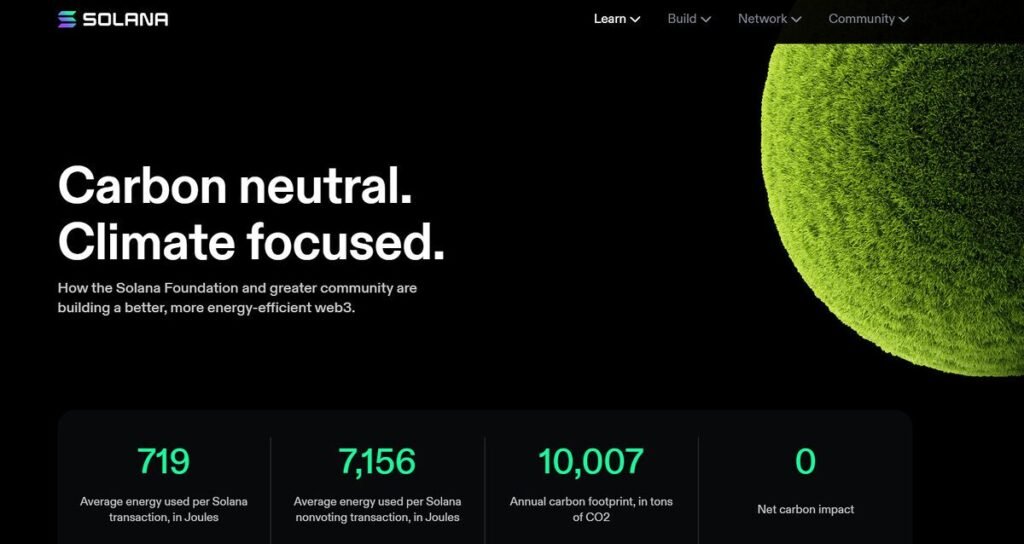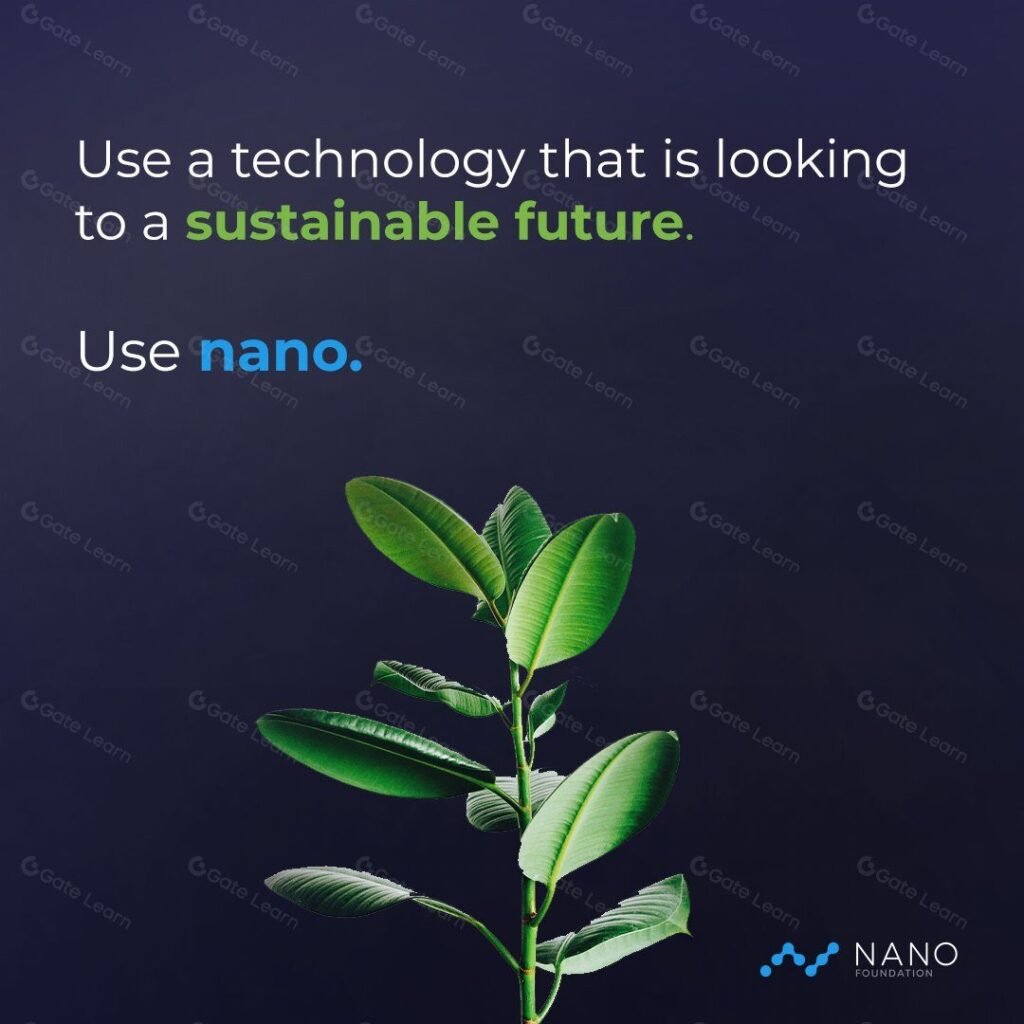Top 10 Green Crypto Projects to Watch in 2025 for a Sustainable Blockchain Future
Top 10 Green Crypto : In recent years, the environmental footprint of blockchain has moved from being a side discussion to one of the central debates shaping the future of digital assets. Bitcoin mining, with its heavy reliance on Proof-of-Work (PoW) mechanisms, drew widespread criticism for consuming electricity equivalent to entire countries. Yet, this controversy has also sparked innovation. A new class of projects is emerging, focusing on low-energy consensus mechanisms, carbon neutrality, and collaborations with renewable energy providers.
The Top 10 Green Crypto projects in 2025 represent this turning point. They are not only rethinking blockchain design but also embedding sustainability into their governance, partnerships, and community-driven efforts. These platforms are leading the way toward a future where crypto adoption can grow without contributing to climate harm, aligning closely with global ESG targets and the net-zero transition.
1. Cardano (ADA): Top 10 Green Crypto -Research-Driven and Climate-Conscious
Cardano has earned its place as a pioneer in sustainable blockchain thanks to its energy-efficient Ouroboros Proof-of-Stake protocol. Unlike PoW systems, which rely on computationally intensive mining, Cardano requires only a fraction of the energy to validate transactions. This allows it to process global-scale operations with minimal carbon emissions, a critical advantage as regulators and investors increasingly scrutinize environmental performance.
What makes Cardano particularly notable is its research-first approach. Every upgrade goes through rigorous peer review, ensuring the technology is not only efficient but also scientifically grounded. Beyond the technical layer, Cardano is actively involved in sustainability initiatives, especially in developing regions like Africa. By enabling blockchain-based identity systems and supply chain tracking, it supports both environmental and social goals. This dual focus—academic rigor combined with real-world impact—solidifies Cardano’s reputation as one of the most climate-conscious crypto projects today.
2. Algorand (ALGO): Top 10 Green Crypto – The Carbon-Negative Blockchain

Source: Cryptoslate
When people ask “What is Algorand’s carbon footprint?”, the answer is a resounding positive for sustainability advocates. Algorand has been operating as a carbon-negative blockchain since 2021, making it one of the earliest movers in aligning crypto with climate commitments. Its Pure Proof-of-Stake consensus drastically reduces the energy consumed per transaction, positioning Algorand as one of the most efficient blockchain networks in operation.
The project’s ongoing partnership with ClimateTrade allows Algorand to automatically offset any residual emissions. In 2025, Algorand has gone beyond simply maintaining neutrality; it has become a hub for ESG-compliant DeFi projects and green finance initiatives. This positions it as a prime choice for institutions bound by environmental regulations or investors who want to ensure their digital asset exposure does not conflict with climate goals. With adoption growing across industries from supply chain to payments, Algorand represents how blockchain can evolve into a climate-positive force.
3. Hedera (HBAR): Energy-Efficient Hashgraph

Source: The Daily HODL
Hedera Hashgraph takes a different path than most blockchain platforms, using its unique Hashgraph consensus mechanism instead of a traditional chain. This design results in extremely low energy usage per transaction, which independent reports suggest is even lower than major global payment systems such as Visa or Mastercard. For enterprises, this efficiency makes Hedera an attractive choice, especially as sustainability metrics become a requirement in digital infrastructure.
The network is backed by a governing council of global enterprises, ranging from technology leaders to financial institutions, which ensures a strong commitment to ESG values. Many of these members are directly involved in developing tokenized green assets, renewable energy credits, and sustainability-focused applications on the platform. By 2025, Hedera has solidified its reputation not only as an energy-efficient network but also as a foundational layer for enterprise-grade sustainability initiatives.
4. Solana (SOL): Scaling Without the Carbon Cost

Source: Daily Coin
Solana has experienced both rapid growth and notable challenges, but its underlying technology remains one of the most energy-efficient crypto designs at scale. By combining Proof-of-History with Proof-of-Stake, Solana can process thousands of transactions per second without significantly increasing its energy demand. In fact, independent assessments have revealed that its per-transaction carbon footprint is lower than Visa, making it a standout case in the green blockchain debate.
In 2025, Solana continues its commitment to carbon neutrality by purchasing verified carbon offsets and investing in renewable energy partnerships. While critics often point to its history of network outages, the improvements in network stability show that sustainability and scalability can coexist. With its thriving NFT and DeFi ecosystem, Solana demonstrates that a blockchain can handle high-volume applications while keeping its environmental impact in check.
5. Polkadot (DOT): Sustainable Multi-Chain Model
Polkadot offers a distinctive approach to blockchain sustainability with its parachain model. By enabling multiple specialized blockchains to connect and share security, Polkadot reduces the redundancy and energy waste often seen in isolated blockchain networks. Its Proof-of-Stake consensus further minimizes electricity consumption, making it one of the more eco-friendly crypto platforms in terms of structural efficiency.
The ecosystem has also embraced projects like Energy Web Chain, which focus directly on renewable energy and climate action. Polkadot’s governance system allows community members to propose and vote on sustainability initiatives, making it a living example of how decentralized decision-making can align with climate responsibility. By 2025, Polkadot is not only advancing technical interoperability but also serving as a launchpad for environmentally focused blockchain projects.
6. Stellar (XLM): Low Energy for Financial Inclusion

Source: YEZLA
Stellar has long stood out for its lightweight consensus protocol, which requires minimal energy to operate. Designed primarily for financial inclusion and cross-border payments, Stellar enables transactions that are both fast and low-cost, without the heavy energy toll of legacy PoW blockchains. This makes it especially well-suited for developing regions where affordability and sustainability go hand in hand.
Beyond its technical efficiency, Stellar is increasingly active in climate finance. Partnerships with organizations working on carbon credit solutions have brought transparency and efficiency to the trading of offsets. This integration shows how green crypto can extend beyond low energy use, actively contributing to real-world climate solutions. By 2025, Stellar’s role as a socially and environmentally conscious blockchain is clearer than ever.
7. Tezos (XTZ): Self-Upgrading and Sustainable

Source: Cs
Tezos combines innovation with sustainability through its Liquid Proof-of-Stake consensus, which keeps energy consumption remarkably low. One of its most unique features is its self-amending protocol, which allows the network to upgrade without requiring energy-intensive hard forks. This reduces waste and keeps the chain adaptable to future technological needs without sacrificing environmental efficiency.
The platform has also emerged as a favorite for artists and creators who want to mint eco-friendly NFTs, offering an alternative to Ethereum’s energy-heavy models of the past. Multiple sustainability reports confirm that Tezos consumes far less energy annually than even many traditional financial services. In 2025, it stands as a strong example of how a blockchain can balance innovation, cultural relevance, and ecological responsibility.
8. Avalanche (AVAX): Efficiency Through Subnets

Source: AVALANCHE
Avalanche’s design emphasizes both scalability and sustainability. Its Proof-of-Stake consensus ensures efficiency, while its subnet architecture allows individual applications to operate in an optimized environment. This reduces unnecessary energy expenditure, particularly important as the network continues to expand its ecosystem of decentralized apps and financial platforms.
What sets Avalanche apart is its growing participation in ESG tokenization projects, where assets like carbon credits are digitized and traded on-chain. By combining scalability with environmental focus, Avalanche demonstrates how sustainable crypto is not limited to energy reduction but can also actively contribute to climate finance innovation. By 2025, Avalanche is positioned as one of the leading platforms for institutions seeking efficient and climate-conscious blockchain solutions.
9. Nano (XNO): Top 10 Green Crypto – The Minimalist Green Crypto

Source: GateLearn
Nano represents one of the purest visions of eco-friendly crypto. With its unique block-lattice architecture, Nano transactions are feeless, almost instantaneous, and consume negligible energy. This makes it a strong candidate for micropayments and everyday use, offering a sustainable alternative to traditional payment processors and energy-intensive blockchains alike.
The community-driven nature of Nano adds to its sustainability ethos, with grassroots initiatives consistently highlighting its environmental benefits. By 2025, Nano continues to thrive as a minimalist yet highly efficient network, showing that sometimes the most sustainable solution is also the simplest one.
10. Chia (XCH): Top 10 Green Crypto – Farming Instead of Mining

Source: CoinTelegraph
Chia takes a radically different approach with its Proof-of-Space-and-Time consensus, which uses storage capacity rather than computational power to secure the network. While this method was initially controversial due to concerns about e-waste from hard drives, the project has worked to address these issues through partnerships with sustainable storage providers.
By 2025, Chia is considerably more efficient than in its early years, carving out a niche as a storage-based blockchain with lower energy demands than PoW networks. Its efforts to improve the durability and recyclability of hardware highlight how innovation and accountability can go hand in hand in the sustainable crypto movement.
Conclusion – Top 10 Green Crypto
The Top 10 Green Crypto projects in 2025 reveal a landscape that is far more diverse and climate-conscious than just a few years ago. From Cardano’s academic rigor to Nano’s minimalist elegance, and from Hedera’s enterprise-focused design to Algorand’s carbon-negative commitments, these platforms illustrate that sustainability is no longer an afterthought—it is a defining standard.
As blockchain technology continues to mature, the expectation for green crypto will only intensify. Investors, institutions, and everyday users alike are beginning to view environmental responsibility as essential for adoption. In this sense, sustainable crypto is not just a passing trend; it is the future direction of blockchain itself.



